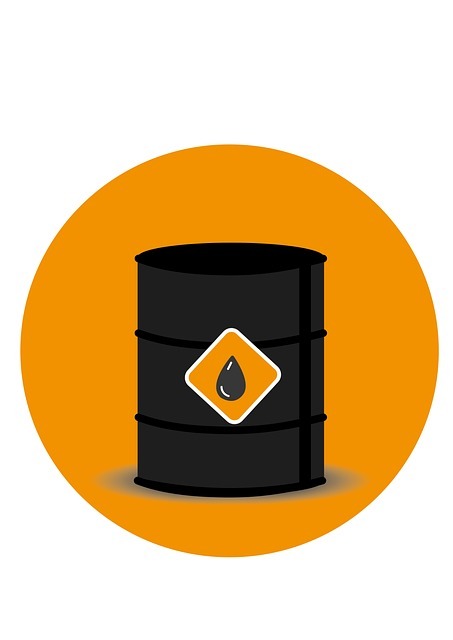A significant worldwide energy source and commonly traded commodity is crude oil. In this article, we examine the history and origins of oil, the major variables influencing its price, and the primary motivations for trading this asset.
PRIMARY TALKING POINTS
- What is crude oil, and what are its applications?
- Major participants in the crude oil market.
- Factors influencing oil prices
WHAT IS CRUDE OIL, AND HOW IS IT USED?
Petroleum, often known as crude oil, is a naturally occurring fossil fuel that today serves as the world’s main energy source. It is created from long-extinct organic matter and may be refined into other fuels, including lubricants, diesel, and gasoline, each of which has a wide range of industrial uses.
As of 2019, the United States, Russia, and Saudi Arabia are the three nations that produce the most crude oil. The commodity is typically recovered from subterranean sources by drilling.
Visit our Major Commodities page to learn how crude oil compares to other energy assets and resources and how to trade them.
EXPLAINING BRENT AND WTI CRUDE OIL
Although the makeup of crude oil varies depending on the source, two varieties are regarded as a standard for world pricing. They are West Texas Intermediate (WTI) from the United States and Brent crude from the United Kingdom. The distinctions are based on elements including composition, place of extraction, and pricing, but for additional information and instructions on trading each asset, check our comparison of WTI and Brent.
POWER PLAYERS IN THE MARKET FOR CRUDE OIL
In 1960, OPEC, the Organization for Petroleum Exporting Countries, was founded. This organization establishes output limits for its members to lessen competition and maintain profitable pricing. Kuwait, Qatar, Saudi Arabia (which governs the Strait of Hormuz), and the United Arab Emirates are the four major members of OPEC. Although OPEC typically controls a significant portion of the oil supply, the US is now the world’s greatest oil producer.

International oil corporations, or IOCs, including ExxonMobil, BP, and Royal Dutch Shell, are the organizations that provide oil to the world market. These are owned by investors and seek to maximize shareholder wealth by pursuing individual interests. National governments hold all or the majority of national oil firms, or NOCs, including Saudi Aramco and Gazprom.
EVOLUTION OF CRUDE OIL
Since the turn of the century, when OPEC dominated world supply and the US-dominated demand, the history of crude oil has seen significant shifts. The barrel price increased from $25 for Brent and $27 for WTI in March 2001 to $140 for both kinds by June 2008, indicating a price bubble, with OPEC controlling the market and Asian demand growing quickly.
However, in the last ten years, increasing US shale oil production has been made possible by technical breakthroughs and regulatory reform, which has resulted in a power shift away from OPEC and toward the US. In June 2014, the price of Brent was $112, and WTI was $105; by January 2016, both were around $36. In response, OPEC banded up with several nations, including Russia, to enact “production limits” to maintain prices. By April 2018, the price per barrel increased to above $70 for Brent and $65 for WTI.
The figure below highlights significant price fluctuations in US crude oil this century and their causes.
WTI CRUDE OIL (2000-2019)

WHAT AFFECTS THE PRICES OF CRUDE OIL?
Supply and demand, which are impacted by variables including outages, production cutbacks by OPEC, seasonality, and shifting consumption patterns, determine the price of crude oil the most. See our guide to trading crude oil for additional information on these and why they are crucial fundamentals to comprehend when trading the commodity.
USD AND THE OIL PRICE
In the past, there has been a negative correlation between the US dollar and oil. Oil prices have often been higher in dollar terms when the USD is weak. Since the US was a net oil importer for a long time, the rise in oil prices has resulted in a more significant imbalance in the US trade balance since more dollars must be transferred abroad. However, some contend that this link exhibits less consistent patterns in contemporary times.
The relationship between the Canadian Dollar and oil prices is more predictable. For instance, as of 2019, Canada sells the US over three million barrels of oil and petroleum products daily, which generates a significant demand for Canadian dollars. More oil is required to meet rising US demand, which often results in higher oil prices. As a result, the USD/CAD exchange rate may decline. On the other hand, if US demand declines, oil prices may also result in a decline in CAD demand.

Reasons to Invest in Crude Oil
Oil is the largest traded commodity in the world and has a dynamic, turbulent, and liquid market. Here are some additional advantages of using this item.
- Due to its volatility, this asset is a favorite of swing and day traders who respond to the most recent information on the oil price. Some individuals see the oil market as a pure opportunity, even though trading may be dangerous.
- A vast amount of crude oil is exchanged on a liquid market. As a result, transactions may be initiated and completed at the desired price points and a reduced trading expense.
- Oil may be traded as part of a hedging strategy to lessen the consequences of the asset’s volatility.
- A diverse portfolio of commodities, equities, and bonds may include oil trading.

